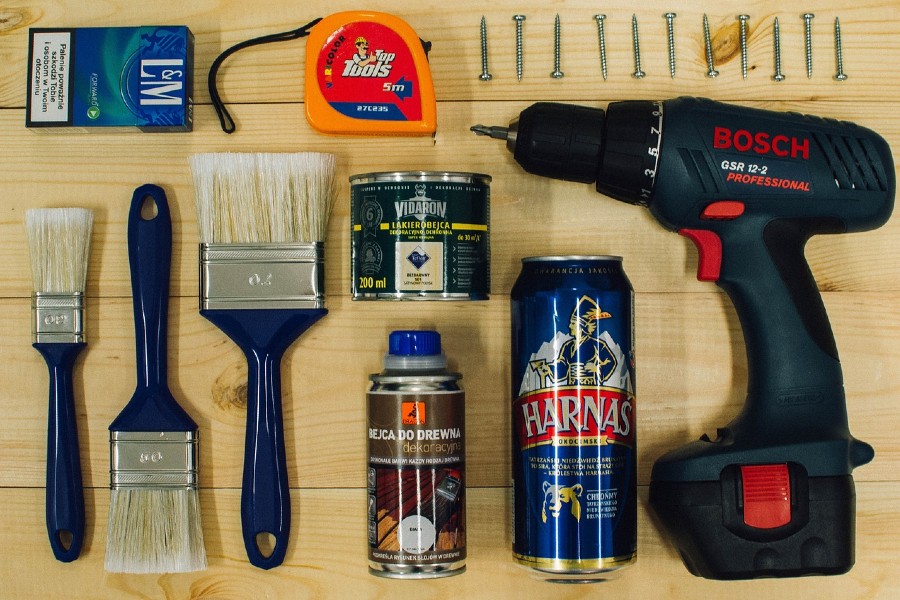
Welcome to our comprehensive guide on understanding professional painting services.
Whether you’re contemplating a fresh coat of paint to rejuvenate your home, or considering a significant color overhaul for your workspace, navigating the world of professional painting can be overwhelming. This guide aims to demystify the process, providing you with the insights and knowledge to make informed decisions. From the benefits of hiring professional painters to the intricacies of selecting the right colors and finishes for your space, we’ll walk you through everything you need to know to ensure your painting project is a smashing success.
Assessing Your Painting Needs
Before jumping into the vast sea of color swatches and finish options, it’s crucial to precisely assess your painting needs. This step is not just about choosing a color; it’s about understanding the scope of your project, the areas that require painting, and the desired outcomes.
Consider factors such as the mood you want to create, the durability of the paint finish, and how the colors will interact with the natural and artificial lighting in your space. Looking for locals is also a good option, whether it’s a painter in Seattle or a painter in Chicago, they will be able to assist with all your painting needs. This thorough evaluation will help you make informed decisions as you move through the painting process.
Choosing the Right Paint
Selecting the perfect paint goes beyond the color; it’s about finding the right type, finish, and quality that meets the needs of your project. First and foremost, consider the type of paint suitable for your space. Water-based paints are popular for their eco-friendliness and ease of use, while oil-based paints are valued for their durability and rich finish.
When it comes to finishes, options range from matte, for a non-reflective look, to high-gloss, which offers a vibrant shine. Each finish has its advantages, depending on the room and how much wear it will endure. Lastly, the quality of paint can greatly affect the outcome and longevity of your project. Investing in high-quality paint can lead to better coverage, fewer coats needed, and a lasting finish that resists fading and wear. Consider these factors carefully to ensure that your painting project enhances the beauty and value of your space.
Surface Preparation
Before the first stroke of the brush or roll of the paint roller, surface preparation is the critical step that can determine the success of your painting project. Proper preparation ensures that paint adheres well and lasts longer, providing a smooth, professional finish. Begin by cleaning the walls to remove dust, dirt, and grease spots, which might affect paint application. Filling holes, and cracks, and dealing with imperfections on the surface are also essential tasks. Use sandpaper or a sanding block to smooth rough areas and ensure that the surface is even.
For outdoor projects, pressure washing might be necessary to remove old paint and grime. After cleaning and repairing, apply a primer to create an ideal surface for the paint to adhere to, especially if you’re making a dramatic color change or painting over a darker shade. Taking the time for thorough surface preparation can significantly enhance the appearance and lifespan of your paint job.
Techniques and Tools
The technique and tools chosen for a painting project can greatly influence the finish and quality of the job. Professional painters often use a variety of brushes, rollers, and spray equipment to achieve the desired outcome. For large, flat areas, rollers provide a fast and efficient way to apply paint, creating a smooth, even coat. Brushes, on the other hand, are ideal for trim, corners, and small areas where precision is key. The quality of the brush also matters as high-quality brushes can hold more paint and provide a smoother application.
Spray painting is another technique used by professionals for its ability to deliver a flawless finish quickly and efficiently, especially on uneven or intricate surfaces. However, it requires skill and protective measures to ensure a safe and clean application. The choice between these techniques often depends on the specific requirements of the project, the type of paint being used, and the desired finish.
Additionally, using the right tools extends beyond brushes and rollers. Drop cloths, painter’s tape, and ladders are essential for ensuring clean lines, protecting floors and furniture, and safely accessing hard-to-reach areas. Professional painters also rely on tools such as paint mixers, extension poles, and edging tools to ensure a high-quality finish. Proper technique combined with the right tools can transform an ordinary painting project into a professional-quality job.
In conclusion, understanding professional painting services involves more than just choosing a color and slapping some paint on the wall. It requires careful assessment, thoughtful consideration of materials and techniques, and proper preparation and execution. By following these guidelines, you’ll be well on your way to achieving a beautiful, long-lasting paint job that adds value and personality to your space.
Become a Harlem Insider!
By submitting this form, you are consenting to receive marketing emails from: Harlem World Magazine, 2521 1/2 west 42nd street, Los Angeles, CA, 90008, https://www.harlemworldmagazine.com. You can revoke your consent to receive emails at any time by using the SafeUnsubscribe® link, found at the bottom of every email. Emails are serviced by Constant Contact








